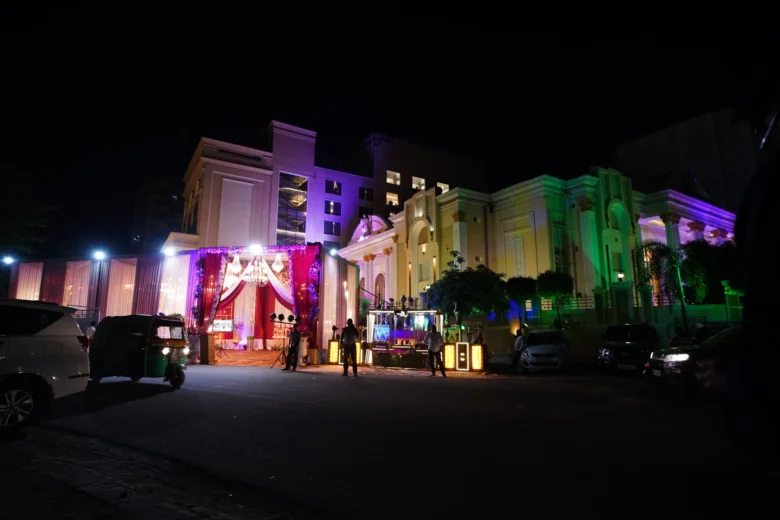Mehndi, also known as henna, is a cherished tradition in Indian weddings, symbolizing joy, prosperity, and the deep bond between the bride and groom. This vibrant and intricate art form plays a pivotal role in pre-wedding festivities, adding color, beauty, and cultural richness to the celebration. Understanding the significance of Mehndi enhances the appreciation of its role in Indian weddings. This guide delves into the history, symbolism, rituals, and modern interpretations of Mehndi, ensuring a comprehensive understanding of this beautiful tradition.
1. Historical and Cultural Origins
Mehndi has been an integral part of Indian culture for centuries, with its origins tracing back to ancient Egypt and the Middle East before becoming deeply rooted in Indian traditions. Historically, Mehndi was applied to signify auspicious occasions, celebrations, and important life events. In Indian weddings, it serves as a symbol of good luck, fertility, and prosperity for the bride and groom.
2. Symbolism of Mehndi
The application of Mehndi carries rich symbolic meanings:
- Joy and Festivity: The vibrant colors and intricate designs reflect the joyous and celebratory nature of weddings.
- Prosperity and Luck: Mehndi is believed to bring good fortune and prosperity to the couple’s married life.
- Love and Commitment: The act of applying Mehndi is seen as a gesture of love and commitment, strengthening the bond between the bride and groom.
- Protection: Traditionally, Mehndi is believed to protect the bride from evil spirits and negative energies.
3. The Mehndi Ceremony
The Mehndi ceremony is one of the most anticipated events in an Indian wedding, typically held a day or two before the wedding day. It is a joyous occasion filled with music, dance, and vibrant decorations. Here are the key aspects of the Mehndi ceremony:
- Henna Application: The bride, along with her female friends and family members, gets intricate Mehndi designs applied to their hands and feet. The designs often include floral patterns, geometric shapes, and symbols that hold personal significance.
- Music and Dance: Traditional songs and dances, such as the popular “Dandiya” and “Bollywood” performances, add to the festive atmosphere.
- Attire: Bright and colorful outfits are worn to complement the Mehndi designs. The bride often dons a lehenga or saree in vibrant hues, enhancing the overall visual appeal.
- Gifts and Festivities: It is customary for guests to bring gifts, and the event often includes games, laughter, and storytelling, fostering a sense of community and joy.
4. Designs and Patterns
Mehndi designs vary widely, each with its unique significance:
- Traditional Designs: These include motifs inspired by nature, such as flowers, leaves, and vines, as well as geometric patterns and intricate lace-like details.
- Modern Designs: Contemporary patterns may incorporate abstract elements, minimalist styles, or personalized symbols that reflect the bride’s personality and preferences.
- Regional Variations: Different regions in India have distinct Mehndi styles. For instance, Rajasthani designs are bold and vibrant, while Gujarati patterns are intricate and detailed.
5. Preparation and Aftercare
Proper preparation and aftercare enhance the Mehndi experience:
- Skin Preparation: Exfoliating the skin and moisturizing the hands and feet before the application ensures better adherence and intensity of the Mehndi.
- Application Tips: Using natural henna paste without additives ensures a safe and long-lasting application. The bride often applies Mehndi herself or has a skilled artist do it.
- Aftercare: To ensure the longevity of the Mehndi design, it should be kept dry for several hours after application. Applying a mixture of lemon juice and sugar can help in darkening the design.
6. Mehndi at Venues like The Ornate Vrindavan
Venues like The Ornate Vrindavan in Lucknow offer the perfect setting for a memorable Mehndi ceremony. Here’s how such venues enhance the Mehndi experience:
- Ambiance: The Ornate’s elegant ballrooms and outdoor spaces provide a stunning backdrop for Mehndi festivities, with decor that complements the vibrant Mehndi colors.
- Customization: The venue’s flexible spaces can be tailored to fit the theme and scale of the Mehndi ceremony, whether it’s an intimate family gathering or a grand celebration.
- Facilities: State-of-the-art facilities, including comfortable seating, ample lighting, and high-quality sound systems, ensure that the event runs smoothly and guests are entertained.
- Culinary Excellence: Delicious traditional snacks and refreshments offered by The Ornate’s culinary team add to the overall enjoyment of the ceremony.
7. Modern Interpretations and Trends
While Mehndi remains deeply traditional, modern interpretations have emerged:
- Temporary Tattoos: For those who prefer not to use henna, temporary Mehndi tattoos offer an alternative that can be applied quickly and easily.
- Customized Designs: Couples are increasingly opting for personalized Mehndi designs that incorporate elements meaningful to their relationship or heritage.
- Eco-Friendly Henna: The use of natural, organic henna paste without harmful chemicals is becoming more popular, aligning with sustainable and health-conscious trends.
8. Conclusion
Mehndi is more than just a decorative art form; it is a significant cultural tradition that embodies joy, prosperity, and the deep bonds of love and family in Indian weddings. By understanding and embracing the significance of Mehndi, couples can enrich their wedding celebrations with meaningful rituals and beautiful traditions. Venues like The Ornate Vrindavan in Lucknow provide the ideal setting for these cherished ceremonies, ensuring that the Mehndi experience is both authentic and unforgettable.


